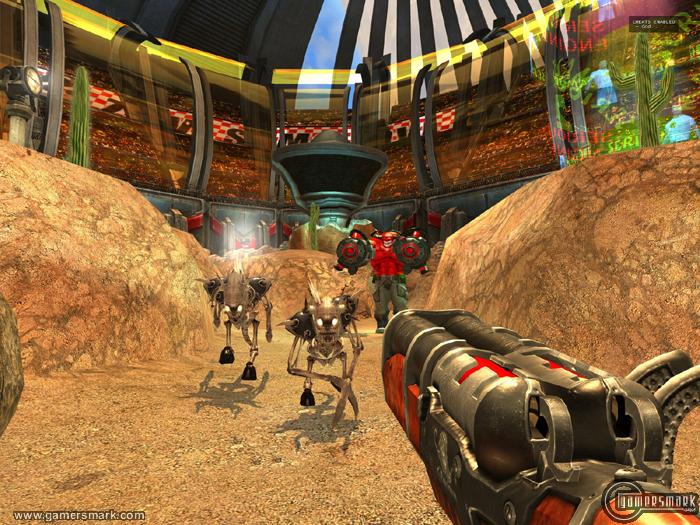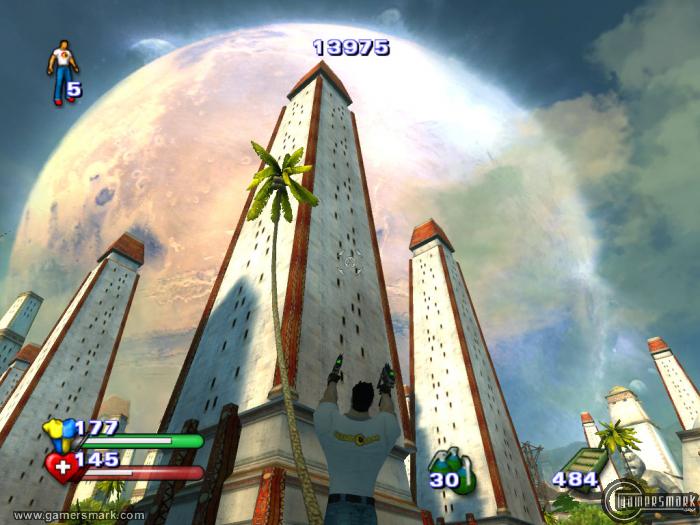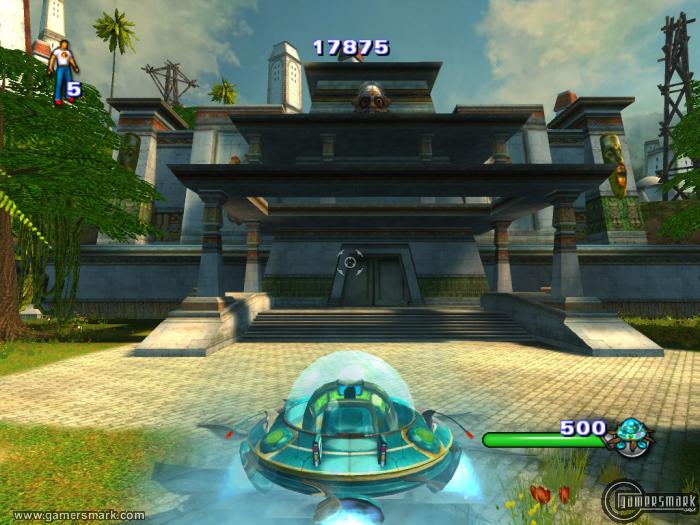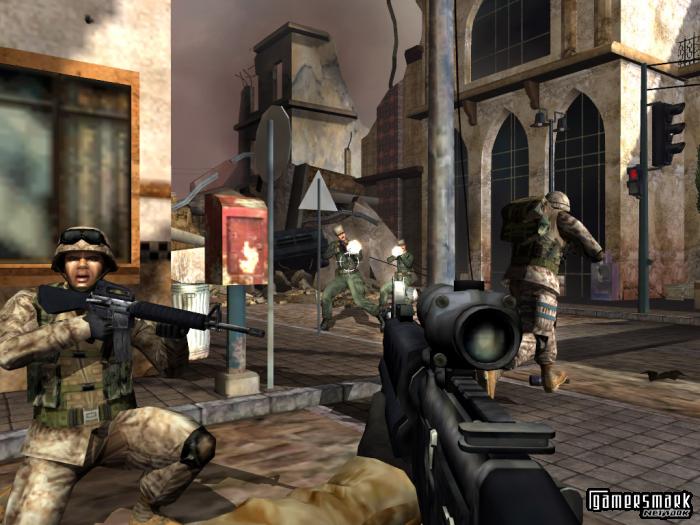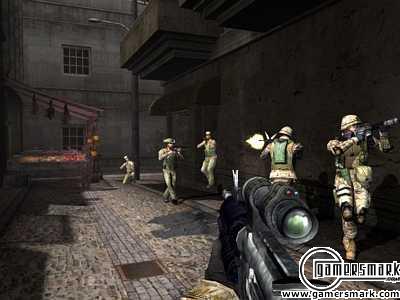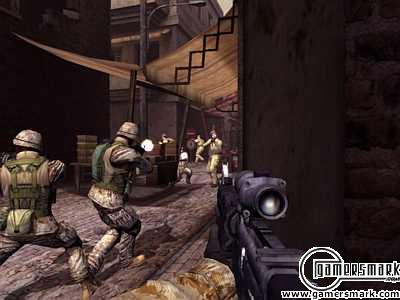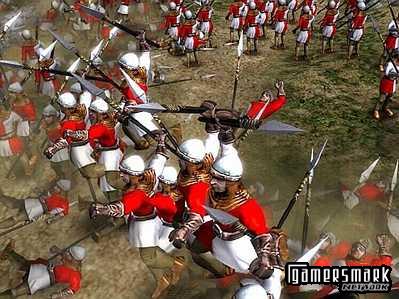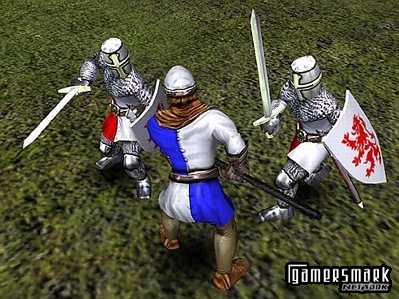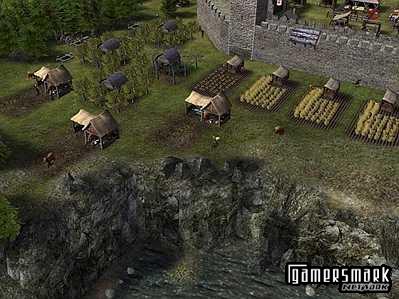Developer: Croteam / Publisher: 2K Games || Overall: 7.8/10
Serious Sam II is the latest from Serious Sam development company Croteam. Serious Sam II has a bit to live up to as the previous games in the series have earned it reputation in the genre they are a part of – the first person shooter (FPS). In a market saturated with FPSs, there are stand-out names that you’ll recognize as a “canon” FPS game; unfortunately Serious Sam just might never be as recognizable of a name as Half-Life, Quake, and Doom because of the unfortunate fact that it does little to really distinguish itself and lacks the quality of the top-rung FPSs out today. Serious Sam II is a step in the right direction for the Serious Sam series, but it’s just not enough to be considered anything more than second-tier.
Serious Sam II starts its single-player mode with Sam being summoned to destroy an ultimately evil guy named Mental, who is the commander of the evil forces that “came from nowhere” in the first Serious Sam. Basically, the goal is to blast your way through all of his minions that come your way on five different planets while in search of a piece of an artifact. When joined, the five pieces hold the key to destroying the seemingly invincible Mental. It’s not a very compelling story to say the least, but there is a sporadic amount of silly humor that can get a few laughs to break up the large amounts of action involved through the game.
So, what separates Serious Sam II from all the other first person shooter games out right now? Not much. The formula of Serious Sam II rides on the droves of cartoon-like enemies (characterized in the Hell motif) that are to be killed. Enemies will constantly appear in large groups and seemingly never-ending amounts. There are solid graphics with pretty scenery, interesting-looking enemies, and aside from the guns the game is full of weird sound effects. As said before, you’ll go through five different planets which will basically just be different in terms of particular enemies you’ll see and possibly guns you’ll pick up. It should be noted that every part of the game is fairly visually pleasing, and as a consequence very demanding on your hardware.
There are plenty of weapons available for use throughout the game. The standard issue radial chainsaw, plasma gun, and dual magnums have unlimited ammo, and at the beginning of each new planet you’ll be reset to the basics. Guns you’ll pick up along the way in each level include the single-shot shotgun, double barrel shotgun, plasma rifle, rocket launcher, and dual Uzis, among others. In first person mode, the guns look very nice, but in third person mode, they won’t be as flashy since you’re looking down from a few feet behind Sam. One thing about the weapons is that you don’t technically reload; you just have to keep your guns fed with ammo to keep them working.
If there’s one thing to say about Serious Sam II, it’s that it’s hard. Really hard. Really really hard. If you play the game on normal or more, you’ll be wasting gobs of time retrying certain parts of levels over and over. I had originally played the game on Normal; about two hours into the game I couldn’t pass a part where an armada of enemies just kept coming and I would keep dying. I got so frustrated that I restarted the game at a lower difficulty and within twenty minutes I was stuck at the same place. If you’re looking for a challenge when it comes to testing your FPS skills, you’ll find it in Serious Sam II.
There is also the possibility of playing multiplayer. There’s not much to it, since you’ll just be playing cooperatively through the whole single player mode with unlimited ammo for all weapons. You can turn friendly fire on or off, but you can’t play a makeshift deathmatch-mode in this way since everyone’s lives feed off the same pile. Believe it or not, that’s all there is to multiplayer — Co-op.
There are parts about Serious Sam II that take a toll on the overall game. First, the frame rate will take a dive when you’re in the middle of huge battles with lots of enemies. What’s even worse is that when you’re NOT in huge battles and there actually are no enemies at all, you’ll still be suffering from a low frame rate. Thankfully, the frame rate isn’t so low that the game is absolutely unplayable, but it does get annoying. The reason behind it is probably because the whole level you’re on is loaded before you play since there are only load screens at the end of the huge stages. Another annoying thing is the sound in pre-rendered cutscenes — it hiccups or cuts out every couple seconds which is also very annoying to say the least. Thankfully, however, there aren’t that many pre-rendered scenes and the real-time cutscenes don’t have sound problems at all.
The level designs also don’t allow for much strategy in how you undertake certain areas such as hiding behind walls or the like. More often than not you’ll be in a somewhat open area fighting the onslaught of enemies rather than fighting a small amount of strategically placed foes. What the game basically comes down to is how good you are at surviving rather than relying on strategy with weaponry, and that gets pretty repetitive. At least there are a lot of levels to play through, however. At times, you’ll have to move items by “picking it up” and if you use certain things to your advantage you can get to certain areas you wouldn’t have been able to otherwise. Not to mention there is a bit of clunky platforming integrated into the game.
What’s presented here might be all that’s really expected from a Serious Sam game, but with weak multiplayer modes, a very lacking story, and difficulty levels that would put escaping from a natural disaster to shame, Serious Sam II ends up not being much more than a first person shooter with tons of enemies to kill amidst massive amounts of frustration. With all that aside, if the culmination of performance problems weren’t present, and it included some more multiplayer options, Serious Sam II could have been a very fun game.

